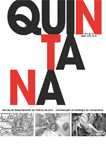Institucionalidad y bellas artes en Chile: el rol tutelar del Estado en el sistema de gestión de la enseñanza, la difusión y el patrimonio
Contenido principal del artículo
Resumen
Las actividades y procesos artísticos en Chile durante la segunda mitad del siglo XIX y primeras décadas del XX estuvieron direccionadas por el Estado, institución que ejerció, a través de distintas entidades corporativas, un claro rol tutelar en este campo. La orientación oficial tomó cuerpo en muchas de las decisiones que se adoptaron, entre ellas las relativas a financiamiento, adquisiciones, becas, contratos de artistas y profesores, y en la integración de las comisiones y jurados de los salones. En todo ello el Estado (Gobierno) expresó una ideología y una sensibilidad coincidente con la oligarquía social que detentaba el poder. En otras palabras, su percepción del fenómeno estético, en lo que respecta a su concepción ideológica y formas de expresión, estuvo mediatizada por necesidades e intereses funcionales a sus proyectos y visiones de sociedad y Estado.


